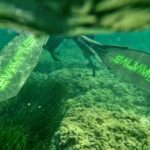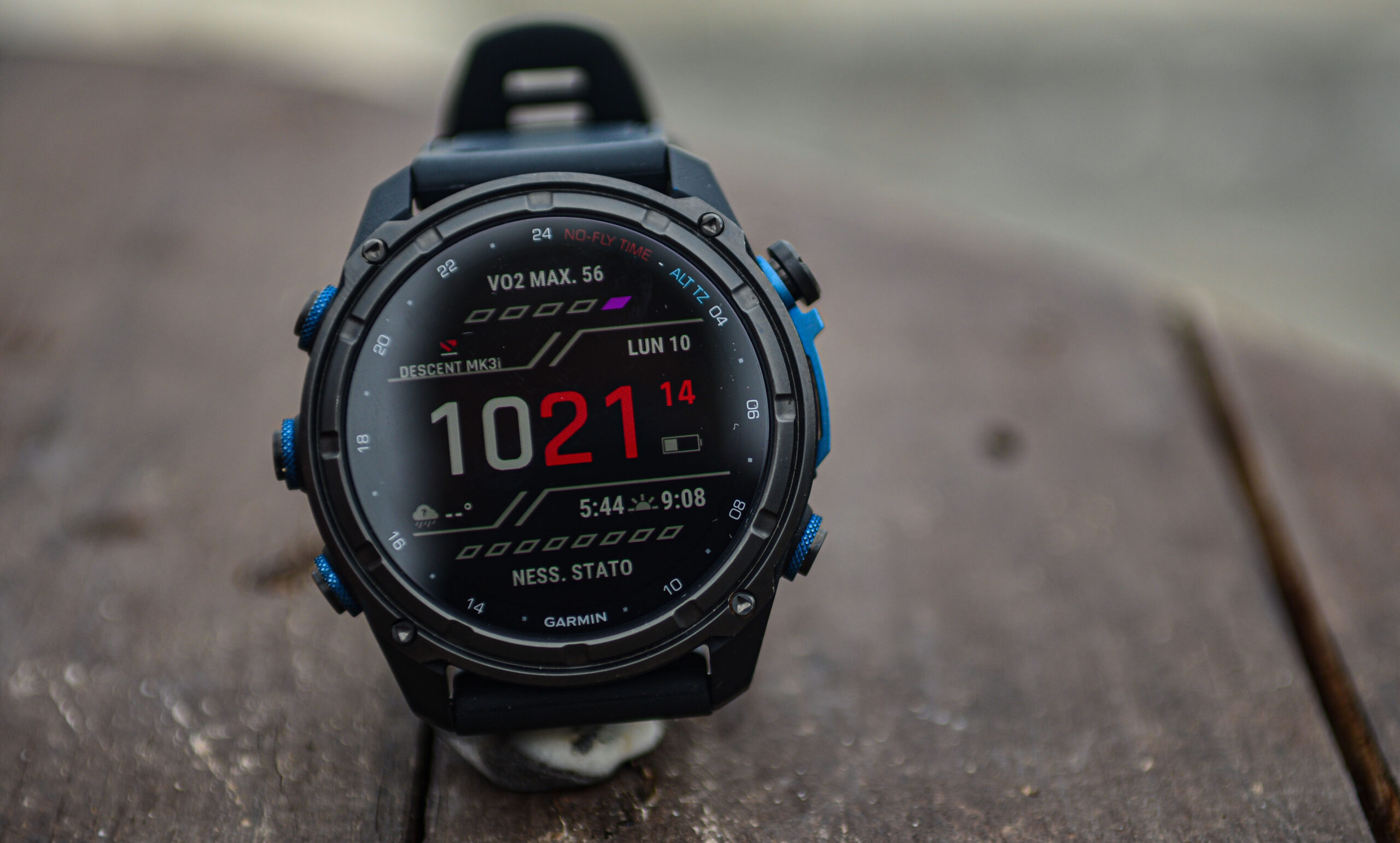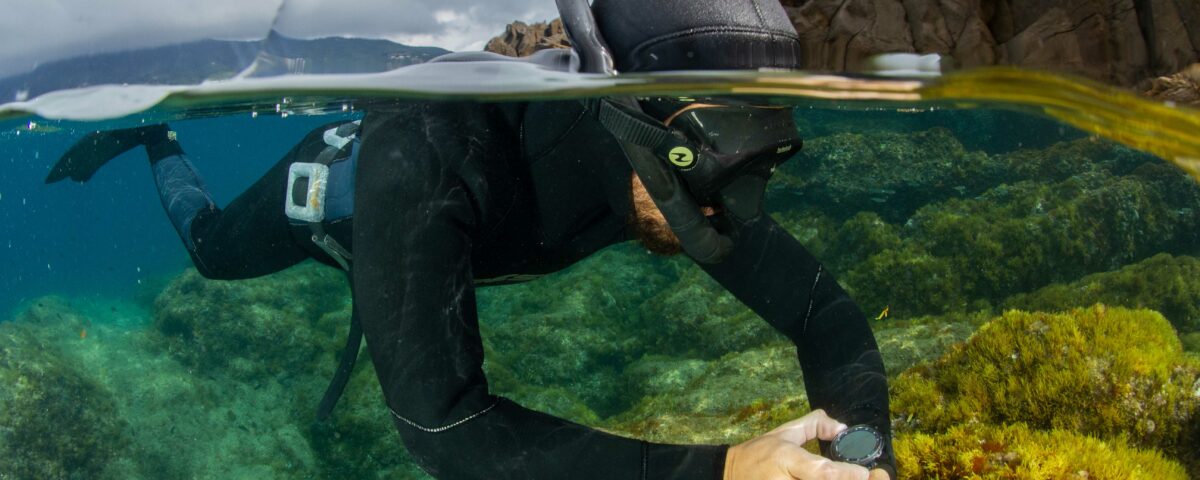Garmin: Descent™ Mk3

SALVIMAR: Speeder HD
22 July 2024
SALVIMAR: Speeder HD
22 July 2024The latest in the successful series that hit the market over six years ago with the Mk1. An incredibly complete and high-performing smartwatch that, compared to the Mk2, features an AMOLED screen and is guaranteed to 200 meters
Alberto Balbi
Descent Mk3 (with the Mk3i variant) is the worthy successor of the original Mk1 model, introduced to the public over six years ago, and the more famous and complete Mk2. This new version boasts an AMOLED display, which is the main innovation of the device, besides being guaranteed to 200 meters (previously 100). Additionally, the model with the larger screen, the 51-millimeter one (the other measures 43 millimeters in diameter), integrates an LED flash useful as a torch both above and underwater.
As mentioned, the main novelty lies in the type of screen. The AMOLED technology allows for a very bright and easily readable instrument, with vivid colors and enhanced contrast; additionally, the touch screen allows for smooth navigation through menus and pages by scrolling up, down, and sideways without issues, even underwater. The built-in torch is very functional and provides a decent power light, useful for illuminating crevices and hiding spots.
The packaging is similar to the previous model and includes a charging cable and a longer strap that can be quickly replaced via a simple clip. On first startup, the quality of the monitor is immediately noticeable, and the menu layout (slightly different from the previous model) is simple and intuitive. Just enter the dive mode, select apnea or fishing, and have fun (with the manual in hand) setting alarms and key parameters for our training.
Naturally, the Descent Mk3 is not just a useful tool for divers but continuously monitors our health status. Thanks to the introduction of Dive readiness, it checks the impact of sleep, stress, and various activities on diving, alerting the wearer to risk factors so they can adjust their training and parameters.
The screen for Apnea and Spearfishing modes displays information on the current dive, including elapsed time, maximum depth reached, and ascent or descent speed. During surface intervals, you can press Down to scroll through additional data, including the time and depth of the last dive, view the map screen, and use the stopwatch. Additionally, various parameters and alarms can be set, such as descent and ascent speeds, alarms at different depths, recovery time alarms, and much more.
At Sea
Wearing the Descent Mk3 during our outings is a real guarantee; the safety factor increases significantly, and you feel confident tackling even challenging sessions. We tested the device over several days of apnea training in protected and reserved sea areas, allowing us to focus on progression without worrying about passing boats.
You can use it by simply setting the Apnea or Spearfishing mode without entering specific parameters, relying on the device for basic information such as maximum depth, current depth, dive times, and surface intervals. However, if you want to fully exploit the device, you can easily set the parameters and alarms for monitoring each dive (see side box). Additionally, each dive can be recorded on maps to create a sort of logbook of our training sessions, always having a history available.
In Spearfishing mode, the selectable parameters are the same, but by default, sound alerts are disabled, keeping only vibrations. Of course, it can also be used in completely silent mode, removing even this last one through specific selections. We successfully used it by selecting alerts that were most useful depending on the situation, even during pool training when it is useful to use various settings for static and dynamic sessions.
As is customary for Garmin, the Dive application (or rather, applications, since there are at least three official ones available for download) for phone and computer is perfect and allows you to keep track of everything done during training, including complete positioning maps and GPS points.
In Summary
It would be reductive to define Descent Mk3 as just a dive computer; it is much more. It is a complete smartwatch. If you are athletic (and most freedivers and spearfishers are), you won't need anything else to monitor all your sports with this device. Once on the wrist and connected to the phone, you won't take it off, choosing from thousands of watch faces the one most suitable for the occasion: from a gala evening to a day of sports, its look will never be out of place and will follow you in every circumstance. The price may seem a bit high, and indeed it is, but if we consider the Mk3 not just as a computer but as a high-quality smartwatch, we will realize that the cost is in line with the market.
Many Customizations
Mk3 can be set to your liking. Here are some examples:
Depth: The alert is triggered when the selected depth is reached.
High Speed: The alert is triggered when the vertical speed exceeds the selected speed.
Low Speed: The alert is triggered when the vertical speed drops below the selected speed.
Buoyancy: The alert is triggered when the selected depth corresponding to neutral buoyancy is reached.
Surface Timer: The alert is triggered at the end of the selected time interval.
Depth Goal: The alert is triggered when the selected depth goal is reached.
Variometer: The alert is triggered each time the selected depth interval is reached.
Start: The alert is triggered when a dive begins.
Stop: The alert is triggered when a dive ends.
Technical Specifications
Battery: 43 mm version, up to 10 days; 45 mm version, up to 25 days
Case: 43 mm or 51 mm
Screen: AMOLED touch
Water Resistance: 200 meters
GPS: Integrated
Material: Sapphire crystal lens, stainless steel or titanium bezel with diamond-like carbon coating, fiber-reinforced polymer case with stainless steel back, silicone strap
Compatibility: iOS, Android.



